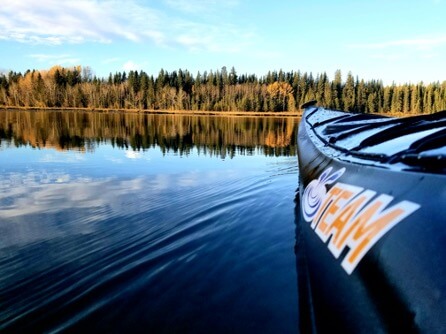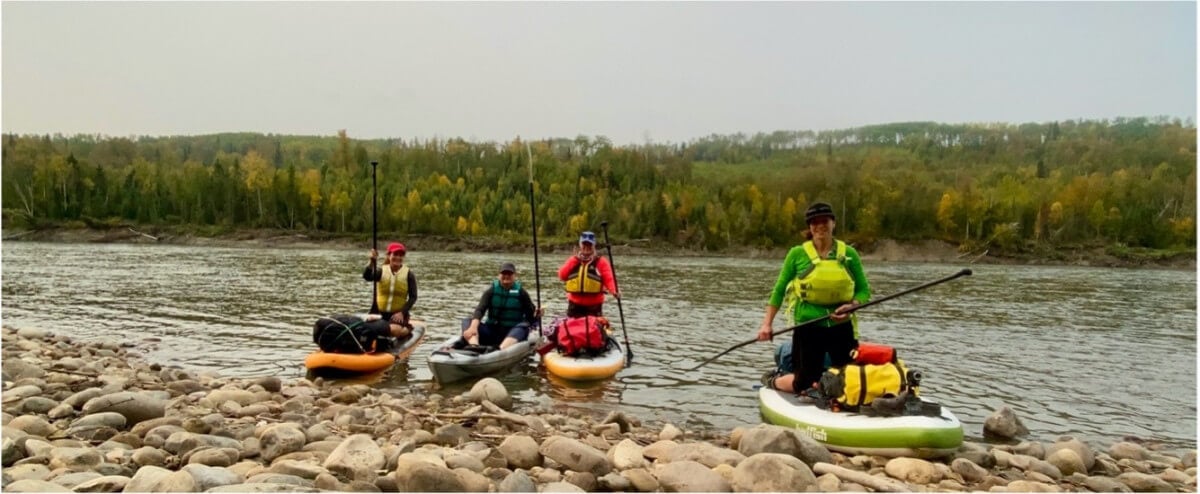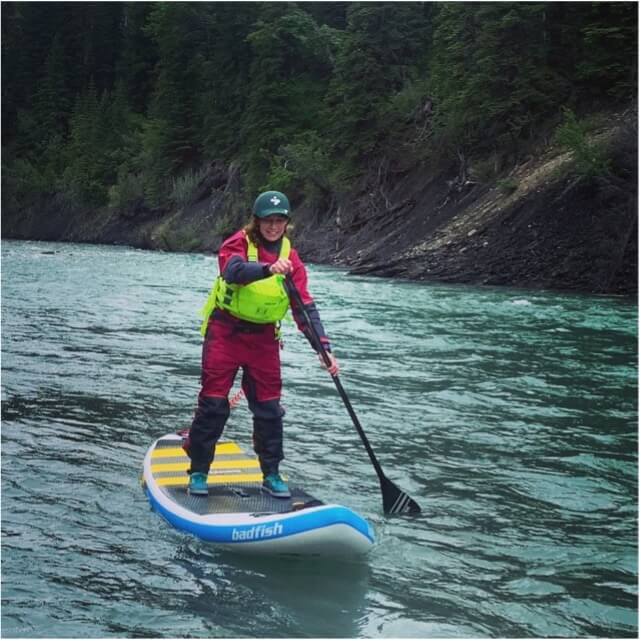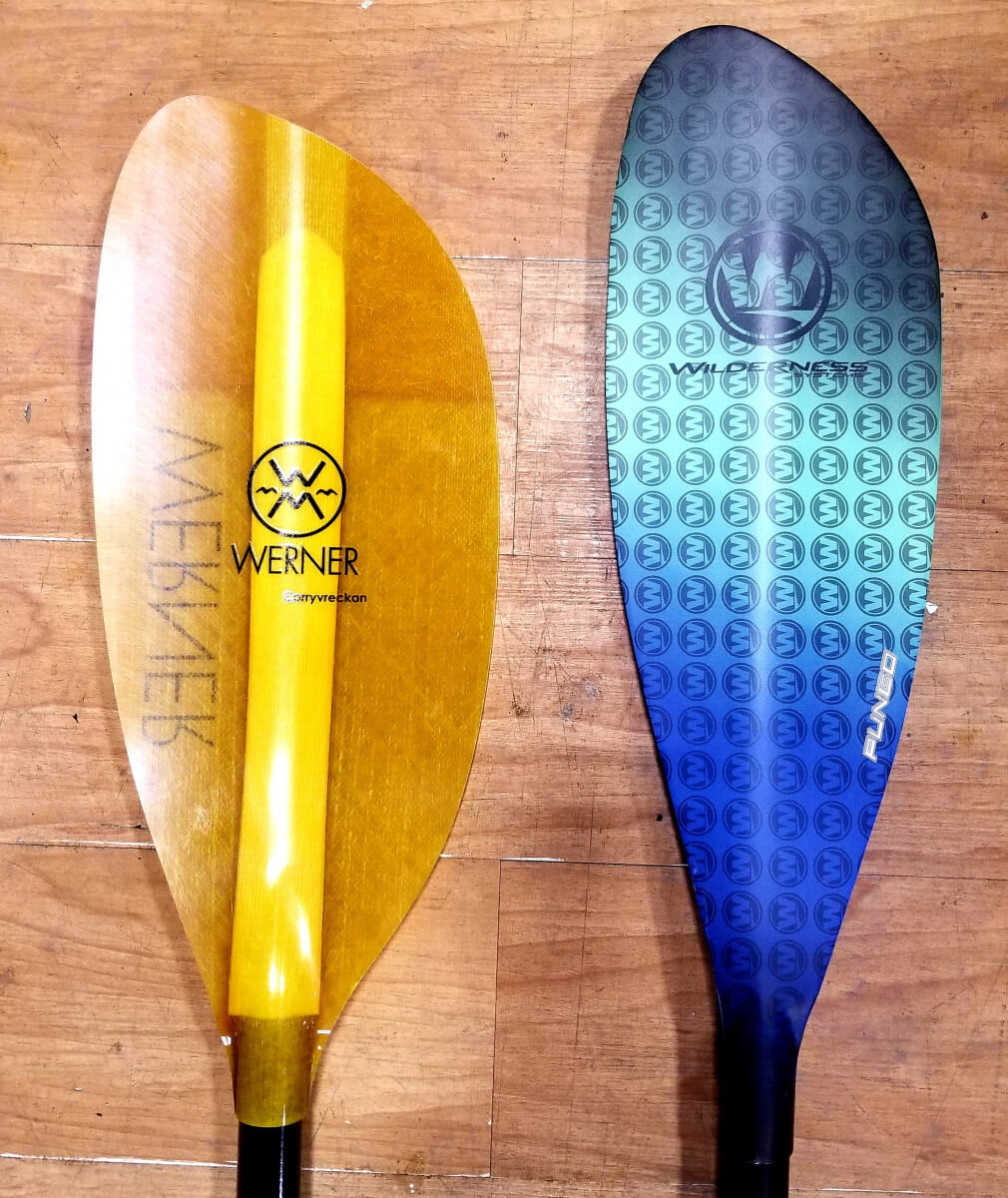It’s important to develop good basic paddle strokes. Whether that’s because you’re new to paddling or jumping back into your rec or touring kayak to brush off the rust at the beginning of the season.
With paddling, we know that eventually muscle memory will take over so we want the right muscles to develop the right memory. A couple goals I have are to make the most of my paddle stroke and ensure I’m using my energy efficiently. These goals enhance safety and allow me to enjoy my time on the water.
Before we talk about paddle strokes, let’s get some basic things dealt with first!
Basic Paddle Strokes for Recreational/ Touring Kayaks
Basic Paddling Strokes Video
Paddler Posture, Relaxed Grip and How to Hold your Paddle

Paddling requires a good body posture and a relaxed grip on the paddle shaft. Whether it’s a lake or a slow-moving river you’re paddling on, water has its own personality; it’s dynamic and ever changing. We need to be able to adapt to these changing conditions by understanding how to use specific paddle strokes and effectively move around on the water to get us where we want to go.
Even experienced paddlers will occasionally start paddling with their paddle upside down. Proper paddle orientation is important; holding the paddle upside down or backwards just isn’t a thing.
After jumping into your kayak, the correct way to hold your paddle is with the longest part of the blade on the top and the shorter part of the blade pointing down at the water. When looking at the blade, you should see the power face of the paddle blade, which is slightly concave. The back face of your paddle should be pointing toward the front or bow of the kayak.
With those things out of the way, let’s talk about paddle strokes.
Forward Paddle Stroke

The forward stroke is the most used stroke yet it’s often not completed correctly or with efficiency. There’s three phases to the forward stroke that help you get the most out of your flat-water paddling.
The Catch Phase
The catch is the first phase of the forward stroke. This is done by reaching with your paddle on one side of the kayak and planting the blade fully in the water about where your toes are.
We’ll refer to the paddle blade that is in the water as the “active blade”.
If you start your paddle stroke on the left side of the boat, this will result in your left shoulder moving forward and your upper body being wound up and rotated toward the right side of the boat. When drawing the paddle back toward your hips, you harness the energy in your core to move the kayak forward.
Imagine that your paddle is fixed in concrete and the paddle stroke moves the kayak past the paddle.
The Rotation and Power Phase
By using the correct body rotation it engages your core muscles. When you pull the kayak past the active blade, your core will unwind and transfer energy to it. Your body virtually unwinds one way and winds up the other way so your body is again in the correct position and ready to engage your core for the next stroke on the opposite side of the kayak.
There are a couple of ways you can test out your technique to get the feel of engaging your core. One way is for your eyes to follow the active blade in the water and you’ll notice how your upper torso and core will be wound up and engaged for each stroke.
Another way is to paddle without bending your elbows. Stiff arm paddling will also help you feel how to engage your core muscles and paddle with more than just the arms.
The Exit Phase
The end of the forward stroke happens at the hip for a high angle paddling style or slightly behind the hip for a lower angle style. It’s at that point where you slice the active blade out of the water and reach for the toes using the non-active blade on the opposite side of the kayak to begin the next stroke.
Varied Forward Stroke Pointers
Higher angle forward strokes consume much more energy but can get you out of tricky water situations quickly. With a higher angle stroke, your active paddle blade is close to the side of your kayak and will result in forward power moving you in a straight direction.
If you’re planning a long distance paddle where slow and steady is the name of the game, a lower angle less aggressive style will be better. With a low angle paddling style, keep your upper hand at chest level and the active blade slightly further away from the side of the kayak. Less energy is consumed with this style of paddling.
Some additional techniques can add efficiency, power and speed to your forward stroke. You can engage your leg muscles by pushing off the foot peg or plate on the same side of the kayak as your active blade. At the same time, with your upper paddling hand, push the paddle shaft forward while your lower arm is pulling back.
Combining these paddling components (lower arm pull, use of core, push with the foot and push with the upper paddle hand) will increase power to your stroke and your speed on the water. Focused practice on all these moving parts will develop muscle memory and improve your paddling skills.

Backward Paddle Stroke
A backward stroke can be used to stop forward movement and to back your kayak up. This stroke is done in the same way as the forward stroke just using opposite movements.
The Catch Phase
Twist your torso around to the right or left so you can plant the paddle blade in the water just at or slightly behind the hip and push the blade forward to the front of your kayak.
The Rotation and Power Phase
Use your core muscles to unwind and transfer power to the back face of the paddle blade. This process of unwinding will again have your core in position to plant your paddle in the water at your hip on the other side of the kayak for another backward stroke.
The Exit Phase
A completed backward paddle stroke occurs when you slice the paddle out of the water once it has reached the front of the boat beside your feet.
Backward Stroke Practice
I’ll often practice the backward stroke when I’m paddling out on a lake with a section of open un-obstructed water. I like to see how long I can maintain a straight course. When paddling with others, you can have a face-to-face conversation while also building strength in a different muscle group.
Sweep Paddle Stroke
Recreational and touring kayaks being longer boats, don’t turn as quickly as their whitewater cousins. You can turn a longer flatwater kayak by using a series of forward strokes on the same side of the kayak. It’s much more efficient though to master the sweep stroke. Sweep strokes can be done using both a forward and backward motion.
Additionally, by combining a forward sweep stroke on one side of the kayak with a backward sweep stroke on the other side, you can quickly spin the kayak around so you’re facing the direction you want to paddle in.
The Catch Phase
The forward sweep stroke starts at the toes with the torso wound up to the opposite side of the active blade. The active blade is pulled through the water using a very low angle and creating a wide arching path with the hand on the active blade reaching out over the water. This reaching motion helps keep the paddle angle low and increases the effectiveness of the turn.
Backward sweep strokes similarly start at the back of the kayak and with the same low angle arching stroke, the active blade is pushed forward using the back face of the active paddle to the front of the kayak.
The Rotation and Power Phase
The forward sweep stroke begins at the bow of your kayak and ends at the stern. It helps to watch the active blade’s path which also produces the appropriate torso rotation so that core muscles can be engaged. To turn your kayak to the left, the forward sweep stroke should be done on the right side. For a right turn, the forward sweep will be on the left side. Repeat the sweep stroke on the same side of the kayak until the turn has been completed.
Backward sweep strokes use the same body rotation to promote core activation. To turn your kayak to the right use a backward sweep stroke on the right side of the kayak. To turn left, use a backward sweep stroke on the left.
The Exit Phase
At the end of the stroke for both forward and backward sweep strokes, slice the blade out of the water about six inches from the side of the kayak. This way you are making the most out of the stroke.
Sweep Stroke Practice
While moving forward, try alternating forward sweep stroke on the right to turn your kayak to a 10:00 o’clock followed by a sweep stroke on the left to turn your kayak to the 2:00 o’clock position. This drill can help you develop boat control.
Draw Paddle Stroke
Finally, the draw stroke is used to move your kayak sideways when you want to ease in beside a fellow paddler, shoreline or dock. This is done by reaching your paddle out to the side of your kayak while having it in a horizontal position. Place the paddle tip into the water to initiate the catch position.
While maintaining a steep paddle angle, gently draw the paddle toward the side of your kayak, even with the cockpit, using the power face parallel to the side of your kayak. Complete the stroke by lifting your paddle out of the water before it contacts the side of the kayak.
If the paddle contacts the side of the kayak, at times it can be forced under the side of the kayak and act as a leaver pushing the side of your kayak down and into the water, resulting in a capsize. This situation is easily resolved by simply letting go of the paddle with your upper hand while your lower hand pulls the paddle out from under the boat edge. Now re-start the draw strokes using as many as needed to get your kayak where you need it to be.
Focusing on locking in good techniques for basic paddling strokes is important. Later in the season, I’ll cover some other topics to help you develop skill and efficiency on the water such as edging and turning your kayak by using more advanced paddle strokes.

“create your own momentum”
Bryan Hume
https://www.facebook.com/bryan.hume.5/
https://www.instagram.com/brhume.yyc/
Other Rec/ Touring Kayaking Posts
High vs Low Angle Kayak Paddle Advice
Essential Recreational Kayaking Gear
Beginner's Guide to Recreational Kayaking Gear
Werner Cyprus Performance Touring Kayak Paddle Review
AQ Outdoors Contact
Edmonton: (p) 780 463-4892 (e) info@aquabaticsedmonton.com
Calgary: (p) 403 288-9283 (e) info@aqoutdoors.com






















































